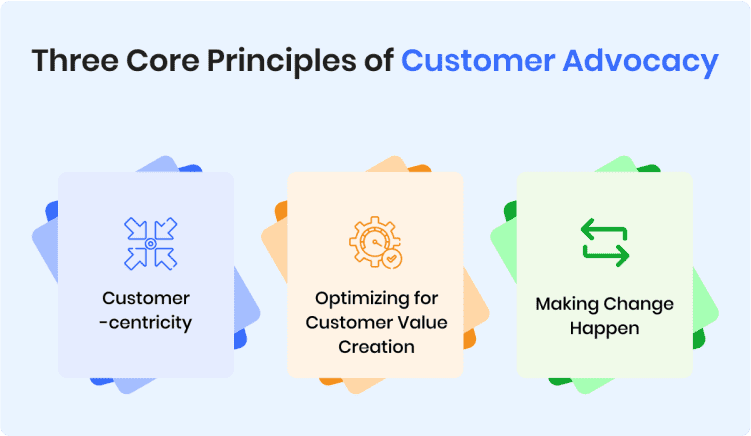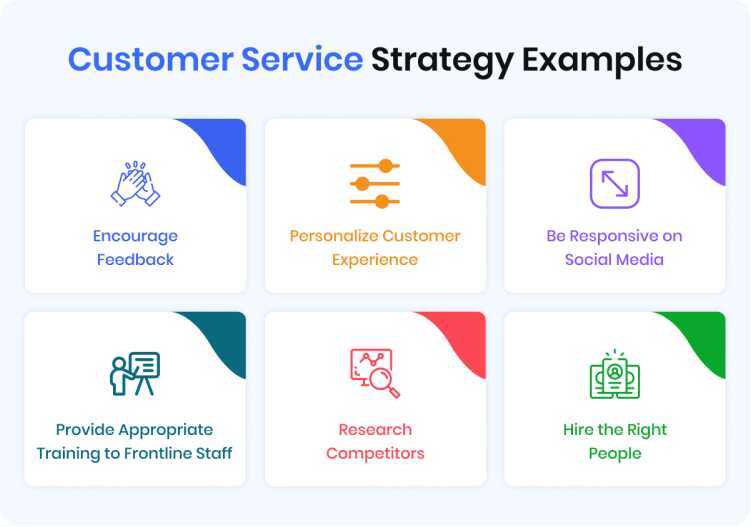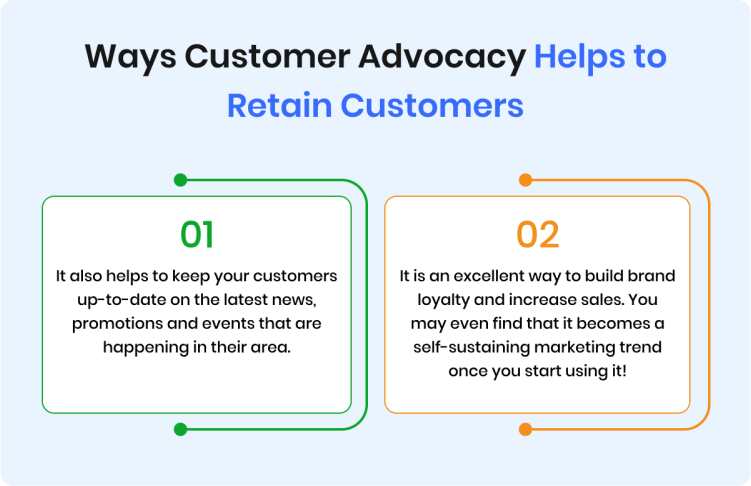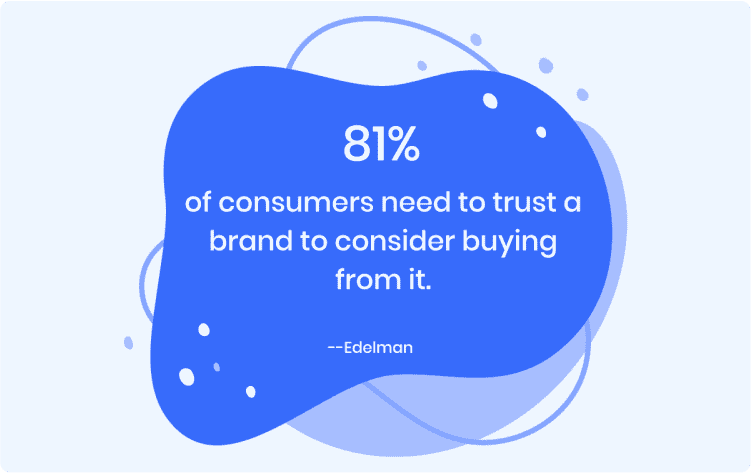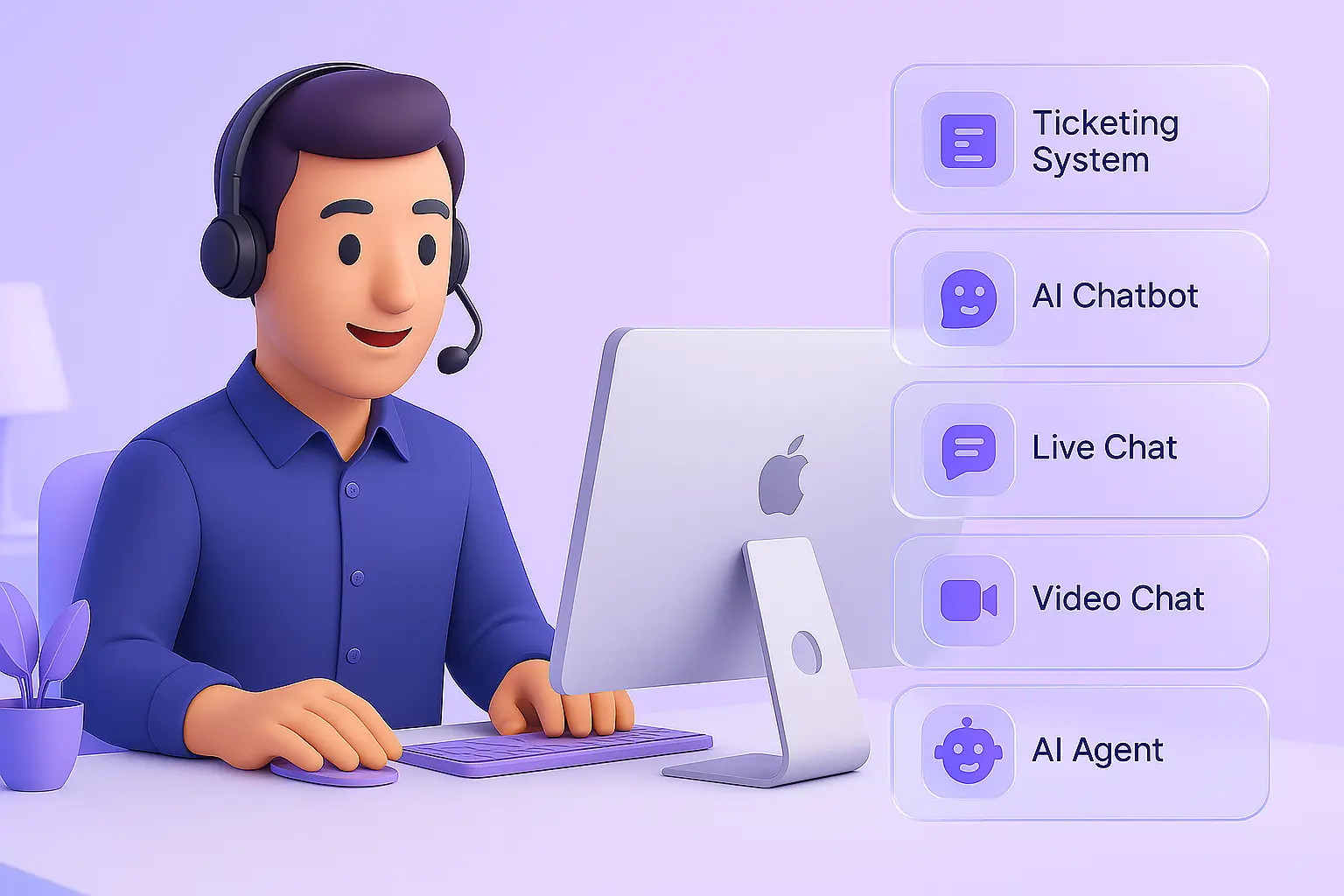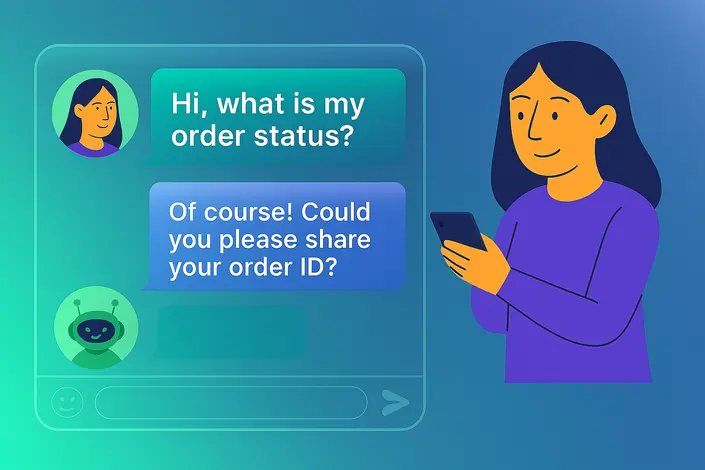Customer Advocacy Programs, Examples & Benefits
- January 16, 2023
- 13 mins read
- Listen

Customer service advocacy is an essential part of any business, as it helps to ensure customer satisfaction and loyalty. It is the practice of actively listening to customers, responding to their needs and wants, and providing them with the best possible experience.
It is a way for businesses to show their appreciation for their customers and build strong relationships. It involves both proactive measures such as anticipating customer needs and responding quickly to customer requests, as well as reactive measures such as taking feedback seriously and making sure that customer complaints are addressed in a timely manner.
By doing so, businesses can ensure that they are delivering an excellent level of service that will keep customers coming back. In this article, we’ll discuss the definition of customer service advocacy, its importance, and its key benefits.
What is Customer Advocacy?
Customer advocacy is the process of engaging customers to understand and influence their own needs and wants. It is often referred to as customer-centricity, which describes the practice of putting customers at the center of your business strategy and operations.
Customer advocacy relies on three core principles:
- Customer-centricity: Put customers first by understanding their needs and wants.
- Optimizing for customer value creation: Pursue what your most important customers want, rather than pursuing what you think they want.
- Making change happen: Don’t wait for someone else to act or create change; take action yourself.
Why Does Customer Advocacy Matter?
There is no doubt that customer advocacy is a highly effective way to build your business and increase customer loyalty. But it’s also an essential skill for any salesperson, regardless of their industry.
If you’re looking to grow your business and become a more effective salesperson, then customer advocacy is the best way to go about doing it.
They understand that every customer is unique; they take the time to find out what makes each person tick, and they use that knowledge to help them make better choices. When buying products and services.
Key takeaways:
- It’s not about promoting products, but rather helping customers solve problems or make progress in their lives.
- It is a proactive approach that shows you care about your customers and helps them reach their goals.
- It’s a way to show appreciation and build rapport with your customers so they become loyal advocates for your brand.
By advocating for customers, companies are able to create loyalty among them, which helps them grow as well as retain customers who are happy with their experience with the company they have chosen.
Key Consideration to Build Customer Advocacy Strategy
There are many factors that go into building a customer advocacy strategy. The most important factor is to know your customers’ needs and wants. You also need to understand their business and how they use technology.
Here are a few key considerations that you need to keep in mind while building your customer advocacy strategy.
- Understand your customers’ needs and expectations of your brand.
- Identify the pain points of your current customers.
- Identify the gaps between what you offer and what your customers want or need.
- Create a roadmap for engaging with your customers through social media, email marketing, and general marketing channels.
6 Effective Customer Advocacy Programs With Examples
There is no doubt that customers are the lifeblood of any business. They’re the ones who make your company successful, and they’re also the people who can make or break it.
At the end of the day, you need to know how to serve your customers effectively. So, they’ll come back again and again.
That’s why customer advocacy programs have become increasingly important as companies try to keep their customers happy by providing them with what they want.
Let’s take a look at the key takeaways.
1. Encourage Feedback
Feedback is one of the most important aspects of customer advocacy programs. You should encourage feedback from your customers, but you should also make sure that they know how to get it.
Here are some ways to encourage feedback:
- Make it easy for customers to provide feedback by providing a place where they can do so in an easily accessible manner (i.e., through a survey or feedback form).
- Make it clear when you want feedback on products and services so that people know what kind of information you’re looking for—and why you need it!
Here’s what else might happen after someone provides good customer service:
2. Personalize Customer Experience
Personalization is a powerful tool that can be used to improve the customer experience. It’s not just about personalizing your greeting or product, but also the experience itself.
For example, you could personalize each page of your website by showing personalized content based on what you know about them (like their location or what they bought recently), or by making sure all pages look similar. So, it’s easy for visitors to navigate through all products in one place.
The best way for companies with different departments (like marketing and sales) to work together on this is by using data from multiple sources—such as web analytics tools like Google Analytics, Facebook Insights, etc.
To share information about customers who’ve visited each department’s website within recent weeks/months/years, etc., then use those insights when determining which messages should appear where throughout their websites’ pages.”
3. Be Responsive on Social Media
Social media is a great way to build relationships with your customers and get feedback. You can use it as a customer service tool, but you should also be responsive on social media.
Be polite and professional when responding to questions or comments from your followers. Don’t just write “Thanks for asking!” or “We’ll get back to you.” Instead, try something like: “I appreciate the feedback! We’re looking into what we can do next time it happens.”
4. Provide Appropriate Training to Frontline Staff
You can also train your staff to be helpful and friendly. If you’re a boutique hotel, for example, consider having a front desk agent who is knowledgeable about local restaurants and attractions.
Or if you run an online retailer with a physical storefront, have an employee who can help customers find items that are out of stock online. So, they don’t have to wait in line at the store for hours on end.
In addition to providing training for frontline staff members (who will interact directly with customers), it’s important that everyone in your company understands how their product or service fits into the larger picture: what competition exists? What market trends are happening now? How does this affect consumer behavior?
5. Research Competitors.
- Social media is the perfect tool for identifying competitors and influencers.
- Use social media to find customer feedback, complaints, and other valuable information that can be used in your advocacy program.
6. Hire the Right People
Hiring the right people is one of the most important things you can do to foster a culture of customer advocacy.
- You want to hire people who are passionate about your product or service. If they’re not excited about what they’re working on, it’s going to be hard for them to put in their best effort.
- You also want to hire people who are good at what they do and willing to learn new skills if necessary—and that includes learning how customer advocacy works! It’s crucial that employees understand why customer advocacy matters so much (and why it’s important) as well as how customers use our product(s).
8 Benefits of Customer Advocacy
The advantages of customer service advocacy are seamless. It is a process of listening to customers, understanding their needs and complaints, and then creating solutions.
It is the act of amplifying customer voices. So that they are heard and the issues they raise are addressed by companies.
There are some benefits of customer advocacy. Now let’s take a look at the main advantages of customer advocacy.
1. Builds Long-term Brand Loyalty
It is an important part of customer retention. It’s a key component of customer loyalty and it can help build long-term relationships between the brand and its customers.
- Customer advocacy builds brand loyalty by creating a bond between your business and its customers through conversations on social media or in real life. If you want to ensure that every time someone buys from you, they’re going to be happy with their purchase experience—and keep coming back again—you need to take advantage of this powerful tool!
- It is a powerful tool that can help you build brand loyalty and increase your customer base. The more people talk about your business and share their experiences with others, the more they’ll attract new customers to your company.
2. Reinforces Customer Retention
You can also use customer advocacy to help you retain customers. It is an effective tool in the hands of an experienced marketer and it has been shown over and over again that when people feel like they’re part of something bigger than themselves. They are more likely to stay loyal.
It will be able to communicate directly with its brand on social media platforms such as Facebook and Twitter; this creates a sense of community for customers who may not have seen each other outside of their immediate circles before.
- It also helps keep your customers up-to-date on the latest news, promotions, and events in their area.
- It is an excellent way to build brand loyalty and increase sales. You may even find it becomes a self-sustaining marketing trend once you start using it!
3. Gives Sales a Boost
The benefits of customer advocacy are many, and they go beyond just increasing sales. It shows that you’re a company that cares about its customers and will go above and beyond to provide them with what they need, whenever they need it.
This kind of reputation can make or break a brand in today’s economy—and when customers see how much effort you put into serving them. They want to do business with you.
There are many ways to implement customer advocacy, but one of the best is through social media.
When customers see that you’re listening to their issues and helping them solve them, they’ll be more likely to share their experience with others, which means more sales for your company.
4. Improves Overall Customer Satisfaction
There is no doubt that it is a great way to improve your customer experience and increase overall satisfaction.
- Customers will be more likely to recommend your brand to others. When you create a positive customer experience, it becomes easier for customers to spread the word about what they love about your business. They’ll also be more willing to buy from you again in the future because they know that their needs are being met, not just one time but repeatedly over time as well!
- Customers will be more likely to trust your brand’s products/services/customer service representatives (CSRs). If a person has an amazing experience with a company or service provider then he or she will feel confident enough in his or her purchase decision going forward. Even if there were some bumps along the way during the delivery process itself!
5. Minimize Customer Acquisition Costs
Customer advocacy is a result-driven tool for generating new business and increasing revenue. It can help you identify potential customers, target them with your products or services, reach out to them and engage with them on social media.
When identifying potential customers, customer advocates will often use tactics such as:
- Search engine optimization (SEO) – This means that when a potential customer searches for information about your product or service on a Google search results page, the keywords chosen by that individual are likely to be relevant to what they’re looking for. For example, if someone searches “women’s shoes” then all the websites containing information about women’s shoes would appear at the top of their list rather than just one specific company selling shoes designed specifically for women – improving their chances of finding what they’re looking for!
- Content marketing – Content marketing involves creating engaging content that relates directly back to existing conversations around topics within particular industries (i.e., food blogging). You could write articles about how much fun cooking dinner can be when done right; why buying organic foods is important; how using reusable bags instead of plastic ones reduces wastefulness etcetera.
6. Increases Brand Awareness
It also helps to increase the brand’s visibility. Customers who are loyal to a company will be more likely to recommend it, which can lead to higher sales and an increase in brand awareness.
Many people have no idea what their favorite products or services are because they don’t know about them at all! By helping customers find the best options for their needs, your business will be able to reach new customers who may not be aware of what you offer but still need something from you.
The next time someone asks for help finding something online or in person and says “I’ll never buy this product again”.
Remember, why they bought it in the first place: because someone told them about how amazing/amazingly cheap/cheaply priced this thing is!
7. Easier to Identify Customer Needs Proactively
It is a proactive approach to customer service. It allows you to identify customer needs before they become problems, and it helps you provide solutions that are tailored to the individual.
By proactively seeking out customers’ desires and needs, you’ll be able to build trust and loyalty among your customers—the foundation of any successful business.
8. Creates a Support System for Other Customers
Customer advocacy is the act of helping other customers, whether they are a friend or a stranger. It’s about supporting others in their journey and sharing your experiences with them.
You can help others by recommending products or services, sharing information about your brand (for example: what’s new), or just being there for them when they need you.
This all starts with one person—you! You have to take initiative and set up regular communication channels with your customers. So that you can stay connected throughout their purchase journey and beyond.
Summary
Customer advocacy is a powerful tool that can help drive your business forward. It strengthens brand loyalty, boosts sales, and minimizes acquisition costs.
It can be used as a way to drive sales, build relationships with existing customers, and create brand awareness. It also helps to create a positive customer experience that can lead to increased customer loyalty and satisfaction.
The key is to ensure that your customers are happy with your products and services. So that they are willing to advocate for them. If you want to deliver next-level customer service then Sign Up for REVE Chat, an omnichannel customer engagement tool.

